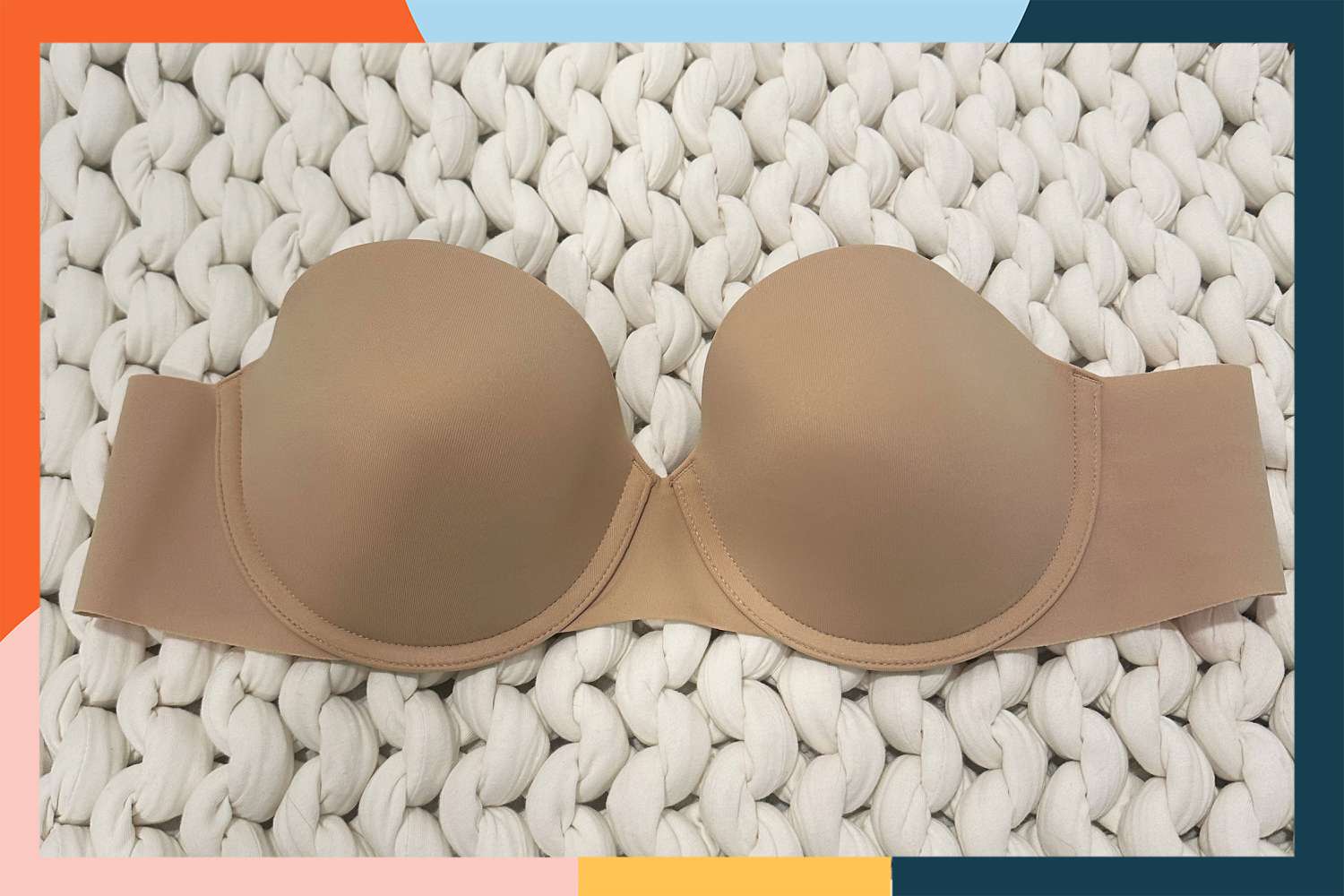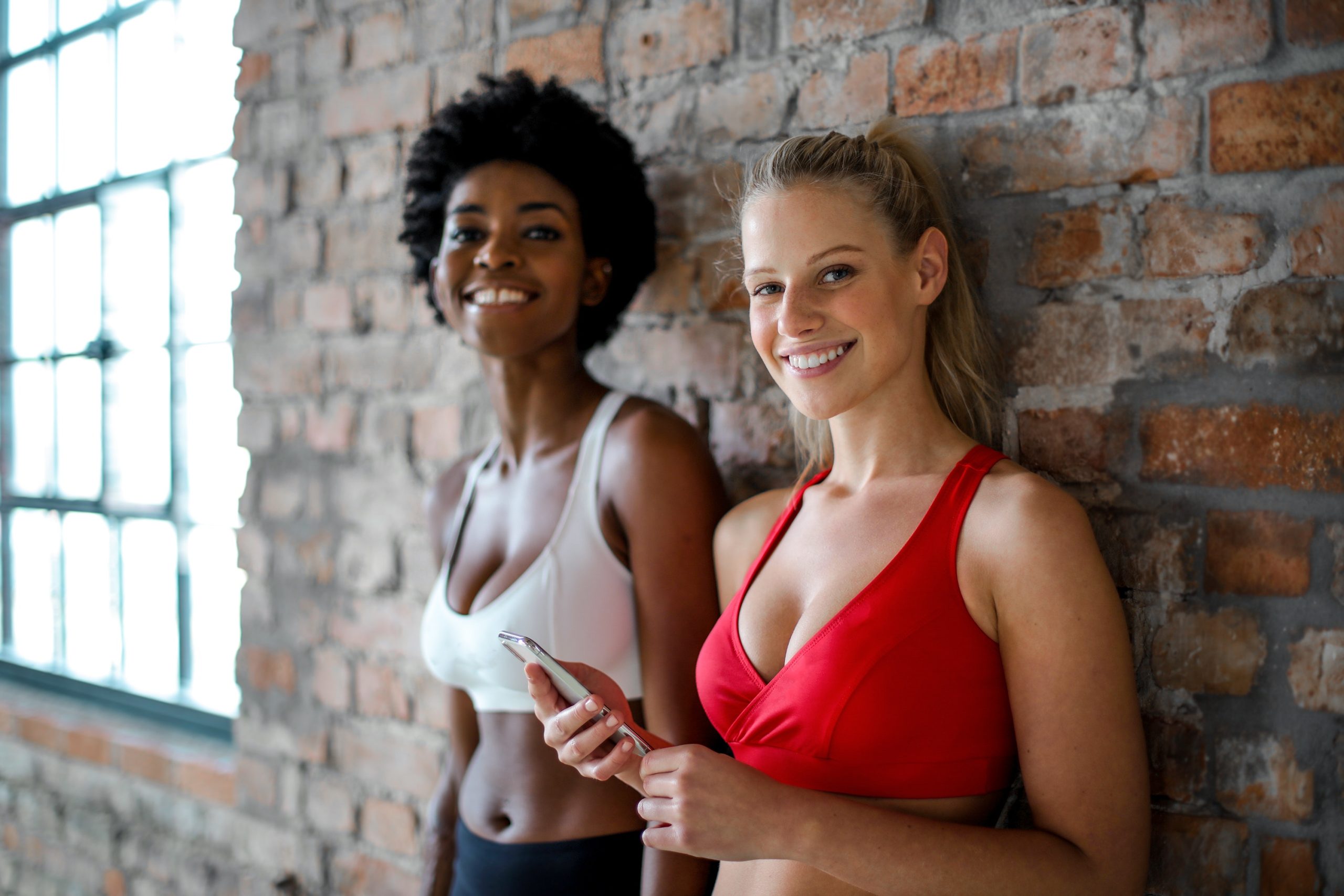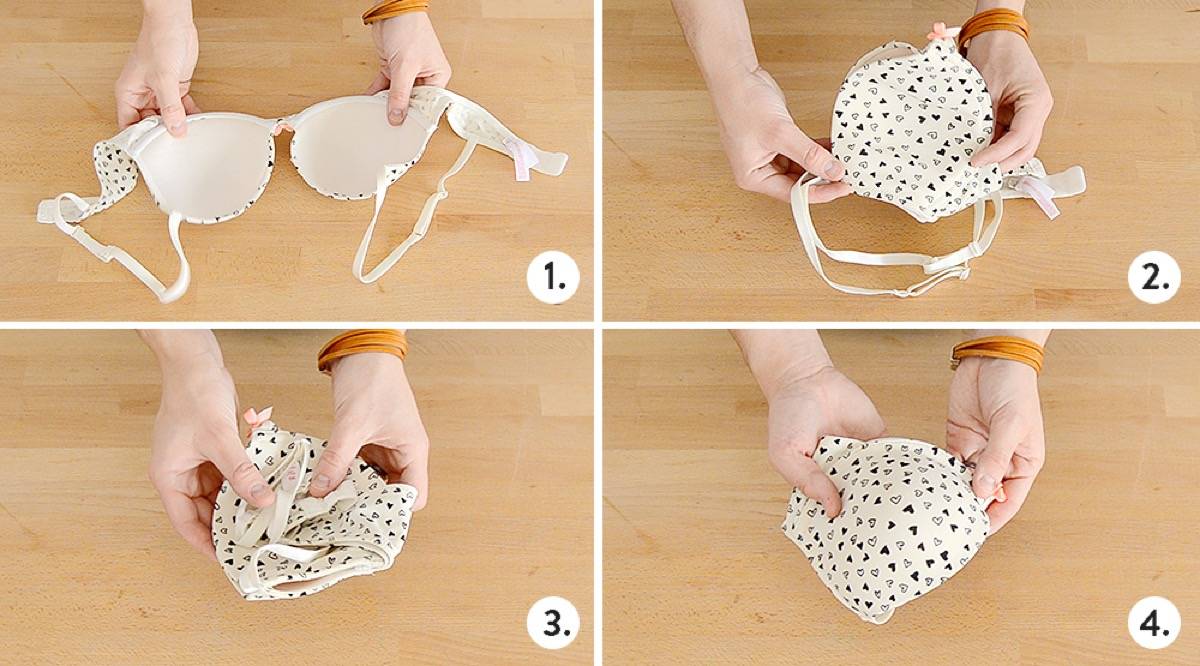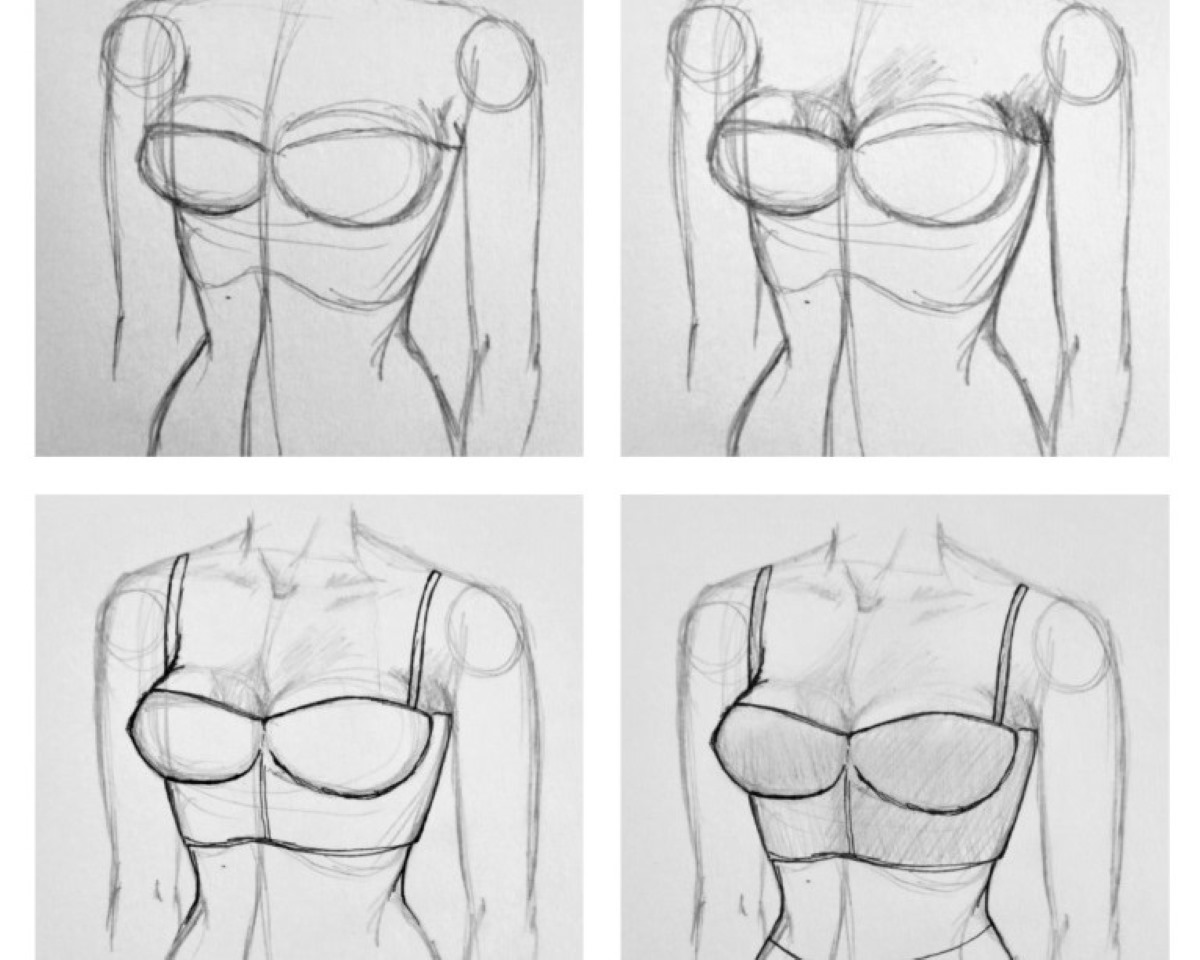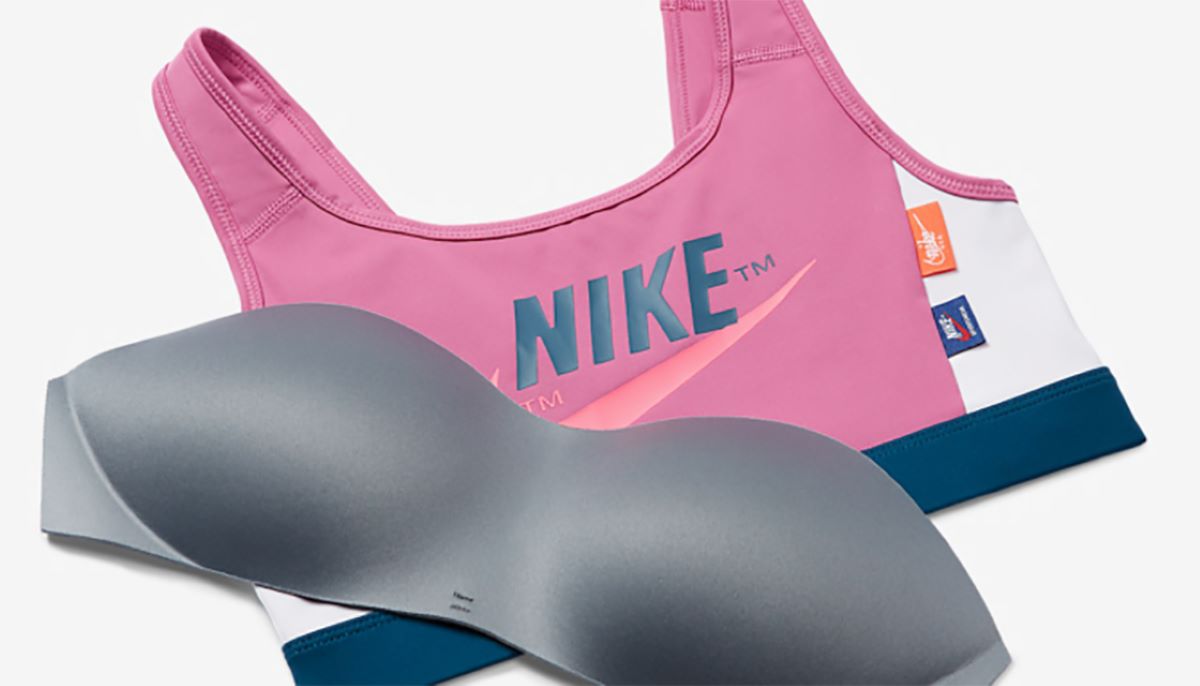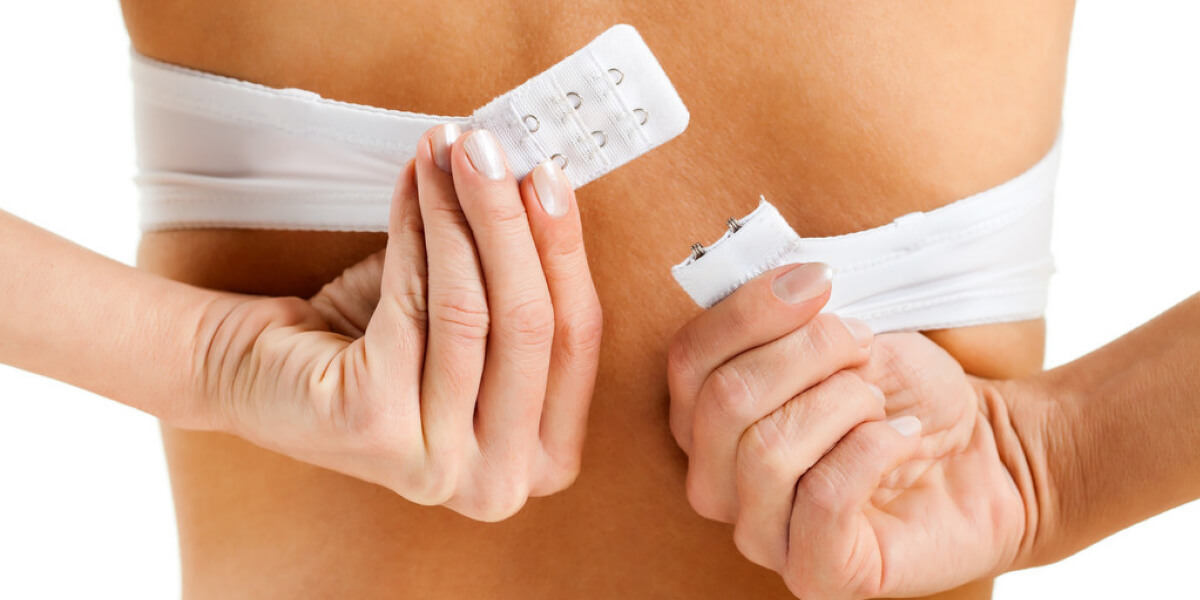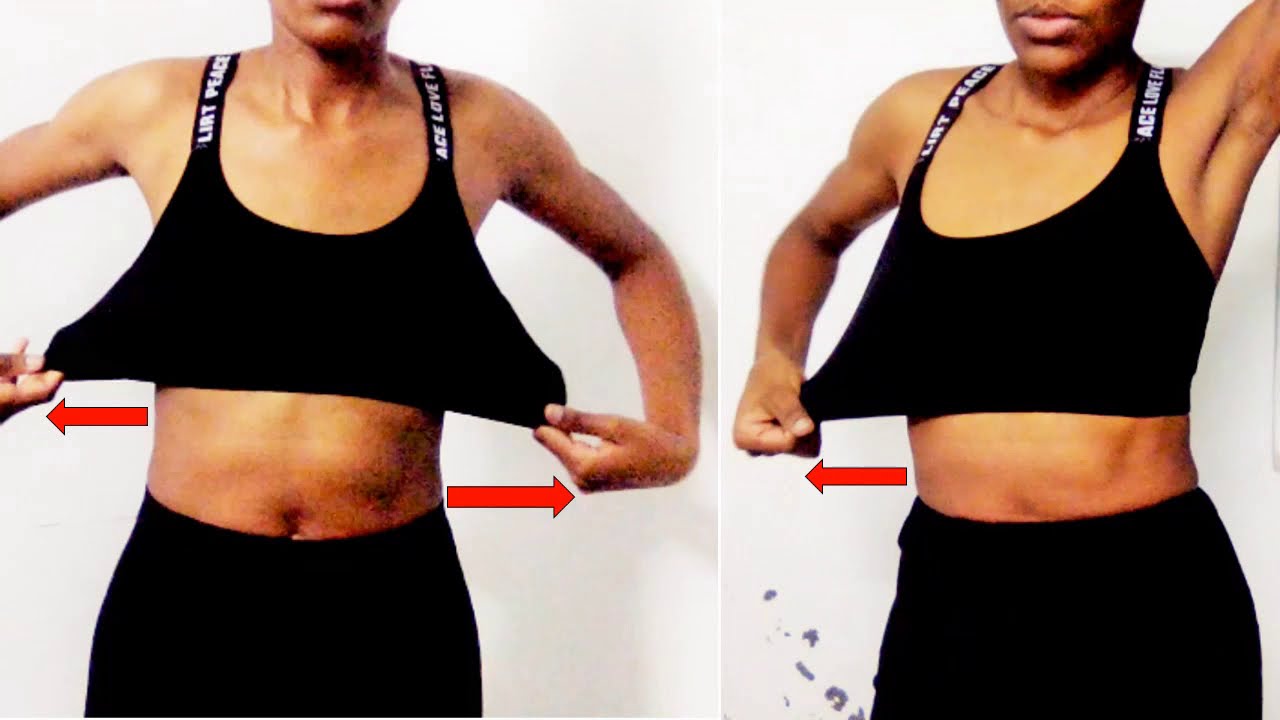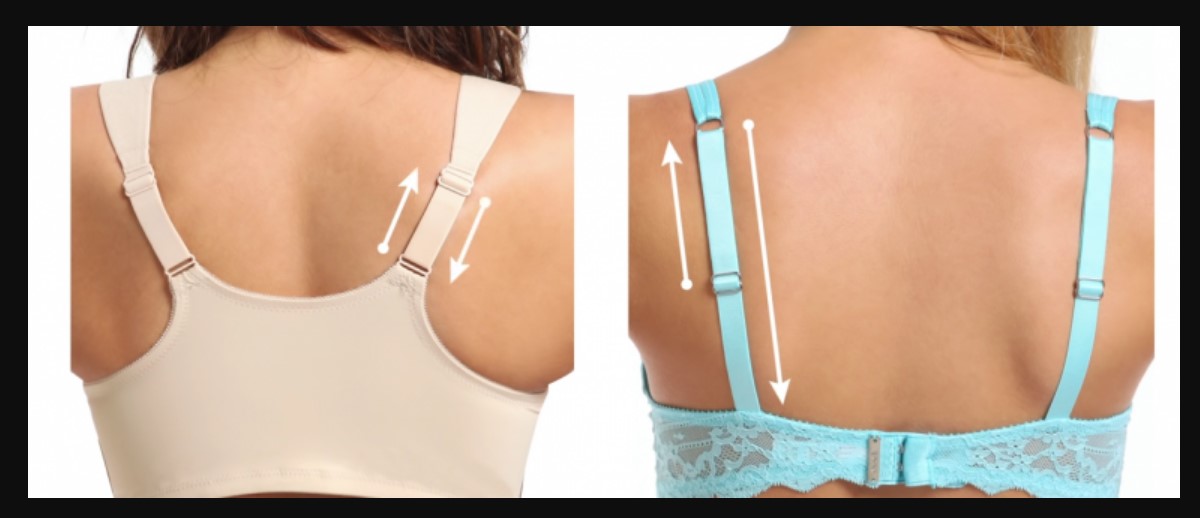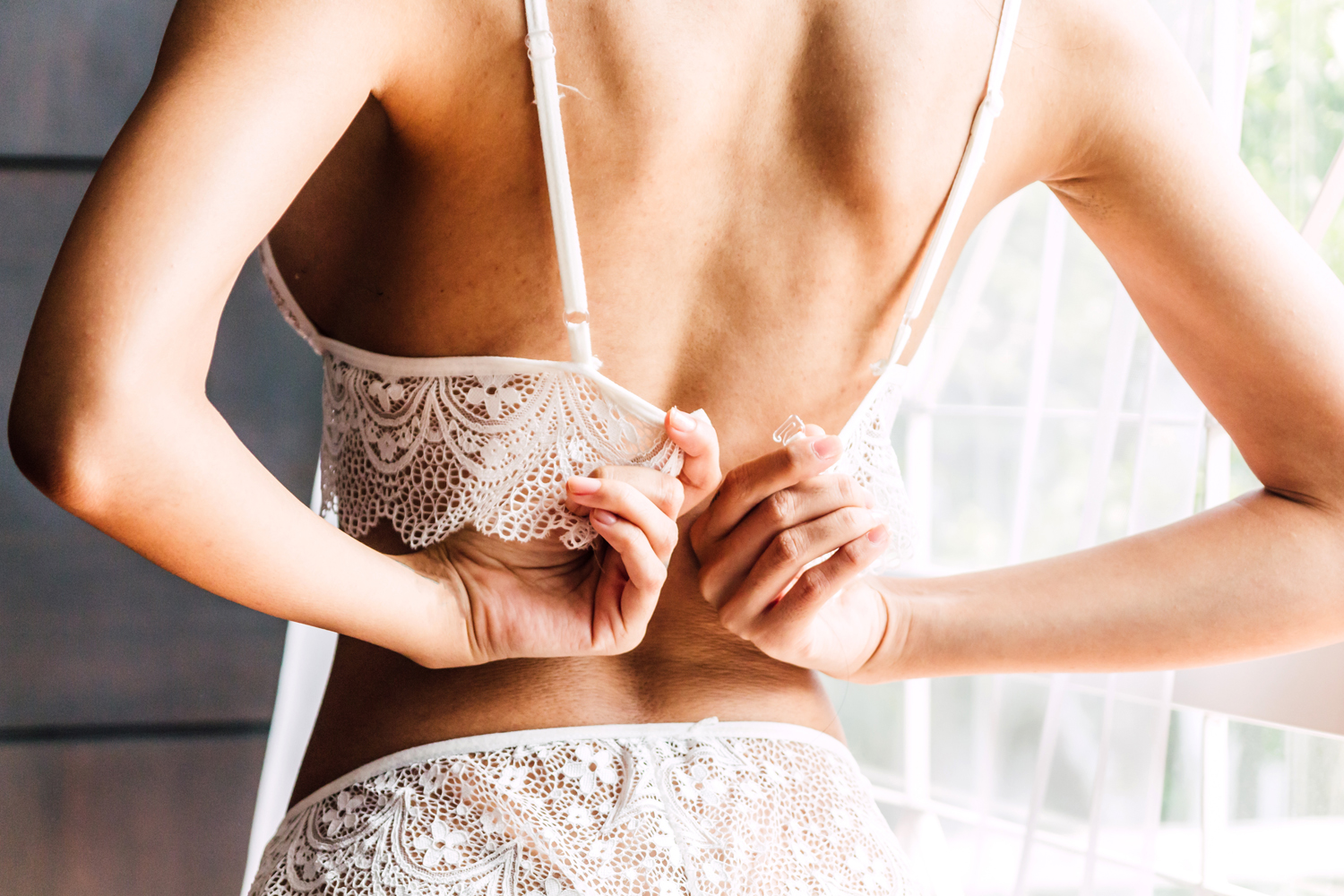Home>Buying Guides>How To Choose Bra
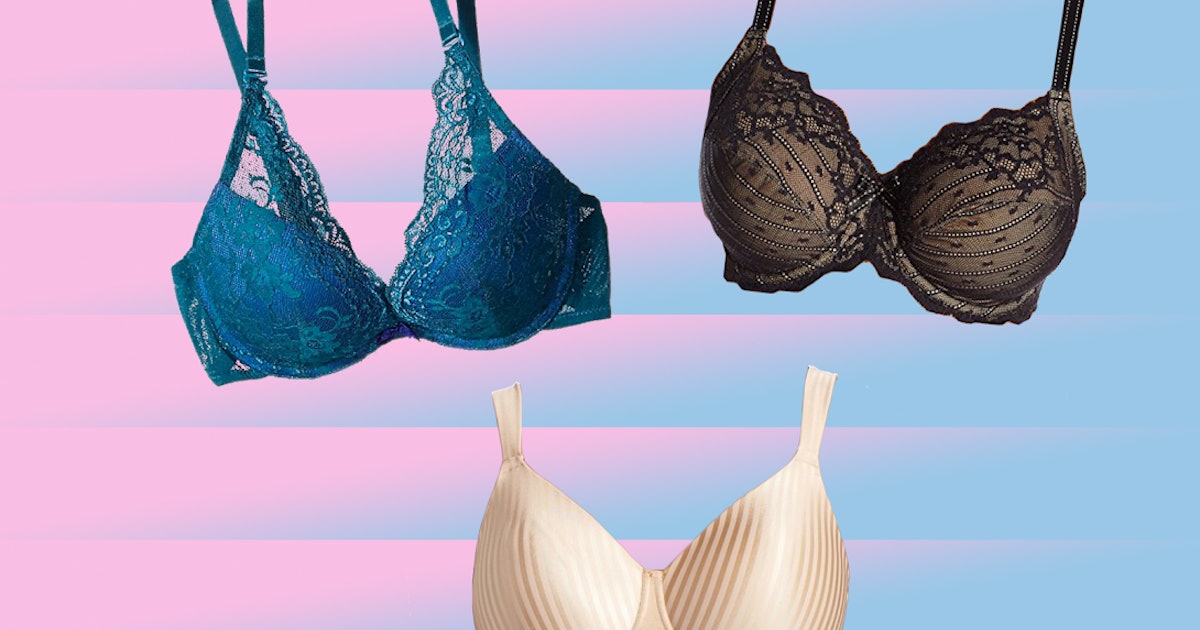

Buying Guides
How To Choose Bra
Modified: September 23, 2023
Discover the perfect bra for women with our helpful guide for how to choose the right fit, style, and support. Shop now for the best selection!
(Many of the links in this article redirect to a specific reviewed product. Your purchase of these products through affiliate links helps to generate commission for Under-tec.com, at no extra cost. Learn more)
Table of Contents
Introduction
Welcome to our comprehensive guide on how to choose the perfect bra! Whether you need support, comfort, or a boost of confidence, finding the right bra can make a world of difference. With the wide variety of options available, it can be overwhelming to know where to begin. That’s why we’ve put together this article to help you navigate through the process and make an informed decision.
A well-fitted bra not only enhances your appearance but also promotes good posture and overall comfort. It is essential to understand your body shape, determine the right size, consider different types of bras, choose suitable fabrics and styles, and prioritize comfort and support. Additionally, trying on and testing the fit and knowing how to care for your bras play crucial roles in ensuring their longevity and effectiveness.
With our expert guidance, you’ll be equipped with the knowledge and confidence to find the perfect bra that meets your needs and flatters your body. Let’s dive in and explore the world of bras together!
Understanding your body shape
Before you start shopping for a new bra, it’s important to understand your body shape. Every woman’s body is unique, and different bra styles are designed to enhance and support different body shapes. Understanding your body shape will help you choose a bra that accentuates your best features and provides the right amount of support.
One popular method to determine your body shape is to examine the proportions of your bust, waist, and hips. The four main body types are:
- Hourglass: This body shape is characterized by a well-defined waist and balanced proportions between the bust and hips.
- Pear: Women with a pear-shaped body have wider hips compared to their bust and a well-defined waist.
- Apple: Apple-shaped bodies typically have a larger bust and midsection, with less defined waistlines.
- Rectangle: Women with a rectangular body shape have similar proportions between their bust, waist, and hips, with minimal waist definition.
Understanding your body shape will help you determine which bra styles will flatter your figure the most. For example, if you have an hourglass shape, you can opt for a push-up bra to accentuate your cleavage, while a balconette or plunge bra can create the illusion of curves for those with a rectangular shape.
Additionally, consider factors such as breast fullness, tissue density, and nipple placement when choosing a bra. For instance, if you have fuller breasts, a bra with full coverage or a minimizer bra can provide the necessary support and minimize the appearance of cleavage. Balconette or demi bras can work well for those with less fullness in the upper bust area.
Remember, understanding your body shape is not about conforming to any societal standards but rather about finding the right bra that makes you feel comfortable and confident. Embrace your unique shape and explore the various bra styles available to enhance your natural curves or create the illusion of curves.
Determining the right bra size
One of the most crucial aspects of choosing the perfect bra is getting the right size. Wearing an ill-fitting bra can lead to discomfort, lack of support, and even potential health issues. To determine your correct bra size, follow these simple steps:
- Measure your band size: Wrap a measuring tape snugly around your rib cage, just beneath your breasts. Make sure the tape is level and parallel to the ground. Round the measurement to the nearest even number. This will give you your band size.
- Measure your bust size: Wrap the measuring tape around the fullest part of your bust, typically at nipple level. Make sure the tape is snug but not too tight. Round the measurement to the nearest whole number.
- Calculate your cup size: Subtract your band size from your bust size. Each inch of difference corresponds to a cup size. For example, if your bust size is 36 inches and your band size is 32 inches, the difference is 4 inches, which corresponds to a cup size D.
It is essential to note that bra sizing can vary between brands, so it’s always a good idea to try on bras before making a purchase. Pay attention to how the bra feels and whether it provides proper support, lift, and coverage. Remember that your bra size may change over time due to factors such as weight fluctuations, pregnancy, or age, so it’s important to reassess your size periodically.
Keep in mind that your bra size is just a starting point. Adjustments may be necessary depending on the style and fit preferences. For example, if you prefer a snugger band for more support, you might consider going down a band size and up a cup size.
Lastly, don’t be discouraged if you find your bra size differs from what you’ve been wearing. Wearing the correct size can greatly enhance your comfort and confidence, and finding the right fit is worth the effort.
Different types of bras
When it comes to bras, there are numerous styles to choose from, each designed for different purposes and outfits. Understanding the different types of bras can help you select the right one for your specific needs. Here are some popular bra styles:
- T-shirt bra: This versatile bra is seamless and has molded cups, making it perfect for wearing under fitted tops and T-shirts. It offers smooth coverage and a natural shape.
- Push-up bra: Designed to enhance cleavage, push-up bras have padding at the bottom or sides of the cups. They lift the breasts and create a fuller appearance.
- Bralette: Bralettes are soft, non-padded bras that are both comfortable and stylish. They often come in lace or delicate fabrics and are great for a relaxed, casual look.
- Strapless bra: Ideal for shoulder-baring outfits, strapless bras have a supportive band and cups without any shoulder straps. Look for one with a wide band and gripper strips for better support.
- Sports bra: Designed for high-impact activities, sports bras provide maximum support and minimize breast movement. They come in different impact levels to cater to various exercise needs.
- Convertible bra: This versatile bra has removable or adjustable straps that can be worn in multiple ways. It can be transformed into a halter, crisscross, or one-shoulder style to accommodate different outfits.
- Plunge bra: Plunge bras have a deep, V-shaped neckline that is ideal for low-cut tops and dresses. They enhance cleavage while maintaining a discreet appearance.
These are just a few examples of the many bra styles available. It’s important to consider your outfit, level of support needed, and personal preferences when choosing a bra. Don’t be afraid to try different styles and see what works best for you. Remember, the right bra can make all the difference in how you look and feel!
Choosing the right fabric and style
When selecting a bra, it’s important to consider not only the style but also the fabric it’s made of. The fabric can greatly affect the comfort, support, and durability of the bra. Here are some factors to consider when choosing the right fabric and style:
- Cotton: Cotton bras are breathable, soft, and hypoallergenic, making them a great choice for everyday wear. They absorb moisture and keep you cool, making them ideal for hot and humid climates.
- Lace: Lace bras are feminine and delicate, adding a touch of elegance to your lingerie collection. They come in various styles, from non-padded bralettes to push-up bras, and provide a blend of comfort and sophistication.
- Satin: Satin bras have a smooth and luxurious feel, often associated with special occasions. They are often padded or underwired, providing support and shaping while adding a touch of glamour to your lingerie wardrobe.
- Mesh: Mesh bras are lightweight and breathable, making them a popular choice for sports bras and hot weather. They offer excellent moisture-wicking properties and provide a comfortable, supportive fit.
- Microfiber: Microfiber bras are smooth, soft, and lightweight. They offer a seamless and invisible look under clothing, making them perfect for T-shirt bras. Microfiber is also known for its moisture-wicking properties.
- Silk: Silk bras are luxurious and gentle on the skin, offering a smooth and sensual feel. They are a great choice for special occasions or when you want to feel pampered and indulgent.
When choosing a bra style, consider the type of outfit you’ll be wearing it with. For example, a T-shirt bra is ideal for everyday wear, while a lace bra can add a touch of sophistication to your date-night attire. If you engage in sports or high-impact activities, opt for a sports bra that offers maximum support and moisture-wicking capabilities.
Remember, the right fabric and style should not only be comfortable and functional but also reflect your personal style and preferences. Experiment with different fabrics and styles to find the perfect combination that makes you feel confident and supported throughout the day.
Considering comfort and support
Comfort and support are two essential factors to prioritize when choosing a bra. The right bra should not only look good but also feel good throughout the day. Here are some key considerations to ensure maximum comfort and support:
- Band size: The band of your bra provides the majority of the support. It should fit snugly around your rib cage without digging in or riding up. Make sure the band is parallel to the ground and sits straight across your back.
- Cup size: The cups of your bra should fully encase your breasts without any spillage or gaps. They should provide a smooth and seamless silhouette. If you have larger breasts, look for bras with wider straps and higher sides for added support.
- Underwire: Underwire bras offer extra support by lifting the breasts and contouring them. Make sure the underwire sits flat against your ribcage and doesn’t dig into your skin. If the underwire is uncomfortable, consider trying a non-underwire bra with ample support.
- Straps: The straps of your bra should be adjustable and sit comfortably on your shoulders. They should provide support without digging in or slipping off. Look for wider straps for added comfort, especially if you have a larger bust.
- Breathability: Consider the breathability of the fabric, especially if you live in a hot climate or engage in vigorous activities. Fabrics like cotton, mesh, and moisture-wicking materials promote airflow and help keep you cool and comfortable.
- Seams and embellishments: Pay attention to the seams and embellishments on a bra. They should be flat, smooth, and not cause any irritation or rubbing on your skin. Avoid bras with excessive lace or embellishments if they tend to dig into your skin.
It is crucial to try on different bras and move around in them to assess their comfort and support. Don’t rely solely on the size labeled on the bra as sizes can vary among brands and styles. Trust your own comfort and how the bra feels on your body.
Keep in mind that comfort and support go hand in hand. A well-fitted bra provides the necessary support to minimize breast movement, reduce strain on your back and shoulders, and promote good posture. Finding a bra that strikes the perfect balance between comfort and support will make a world of difference in your daily comfort and confidence.
Trying on and testing the fit
Trying on a bra before making a purchase is essential to ensure the perfect fit and comfort. Here are some tips to help you test the fit of a bra:
- Start with the band: Put on the bra and fasten it on the loosest hook. The band should fit snugly around your rib cage, parallel to the ground, and not ride up. If it feels too tight or too loose, try adjusting the band size accordingly.
- Check the cups: Your breasts should be fully contained within the cups without any spillage or gaps. The underwire, if present, should sit flat against your ribcage. Adjust the straps if needed to ensure a proper fit.
- Test the support: Move around, bend forward, and lift your arms to see how the bra holds up. The bra should provide ample support and keep your breasts comfortably in place without excessive movement or discomfort.
- Assess the comfort: Pay attention to any areas of discomfort or irritation, such as digging straps, a tight underband, or rubbing underwire. A comfortable bra should feel supportive, secure, and barely noticeable throughout the day.
- Try different sizes and styles: Don’t be afraid to try different sizes and styles to find the best fit for your body. Remember that bra sizing can vary between brands and styles, so stay open to different options.
It’s important to trust your own comfort and intuition when determining if a bra fits correctly. Your comfort level is key, so trust your instincts and don’t settle for a bra that doesn’t meet your expectations.
If you’re still unsure about the fit, consider seeking guidance from a professional bra fitter. They can assist in finding the right size and style that suits your body shape and preferences. Remember that the correct bra fit can enhance your posture, provide optimal support, and boost your confidence.
Tips for maintaining your bras
Proper care and maintenance of your bras are essential for preserving their shape, support, and longevity. Here are some tips to help you keep your bras in optimal condition:
- Handwash or use a gentle cycle: To prevent damage, it’s best to handwash your bras using a mild detergent. If using a washing machine, place the bras in a lingerie bag and use a gentle cycle with cold water.
- Avoid machine drying: High heat from a dryer can warp the shape and elasticity of your bras. Instead, lay them flat or hang them to air-dry in a well-ventilated area.
- Rotate your bras: Give your bras a break between wears to allow them to regain their shape and elasticity. It’s best to rotate your bras so that each one gets a chance to rest and recover.
- Store them properly: Keep your bras in a drawer or on a dedicated bra hanger, ensuring they are not crushed or folded. Stack them with the cups facing up to maintain their shape.
- Avoid folding the cups: Folding the cups of your bras can cause creasing and distortion. Instead, stack them neatly to preserve their shape and structure.
- Fasten the hooks: Before washing or storing your bras, fasten the hooks to prevent tangling and potential damage to the fabric or other bras.
- Avoid using bleach: Bleach can weaken the fabric and elastic components of your bras. Stick to gentle detergents and avoid harsh chemicals.
- Be cautious with handwashing: When handwashing your bras, avoid excessive wringing, twisting, or scrubbing, as it can damage the delicate fabrics and wires.
- Replace worn-out bras: Bras have a lifespan, and worn-out bras may not provide the necessary support or comfort. Keep an eye out for signs of wear, such as stretched straps, fraying fabric, or a loose band, and replace them when needed.
By following these tips, you can extend the lifespan of your bras and maintain their support and comfort. Proper care and maintenance will ensure that your bras continue to provide the best fit and support, helping you look and feel your best.
Conclusion
Choosing the perfect bra is a journey that involves understanding your body shape, determining the right size, considering different styles and fabrics, and prioritizing comfort and support. It’s worth taking the time and effort to find a bra that not only enhances your appearance but also makes you feel comfortable and confident.
Remember that your body shape is unique, and there is a wide variety of bra styles available to suit your individual needs. Whether you prefer a T-shirt bra for everyday wear, a push-up bra for added confidence, or a sports bra for active pursuits, there is a perfect bra out there for you.
Take the time to measure yourself correctly and try on different sizes and styles to find the best fit. Don’t hesitate to seek guidance from a professional bra fitter if needed. Trust your own comfort and intuition when determining if a bra fits properly.
Once you’ve found your ideal bra, it’s important to care for it properly. Handwash or use a gentle cycle, avoid machine drying, and store your bras in a way that maintains their shape and support. By taking these steps, you can prolong the life of your bras and ensure they continue to provide the comfort and support you need.
Remember, choosing the right bra is not just about the size and style, but also about embracing your unique body and feeling confident in your own skin. With the information and tips provided in this comprehensive guide, you are now equipped to navigate the world of bras and find the perfect fit for your body and lifestyle.
